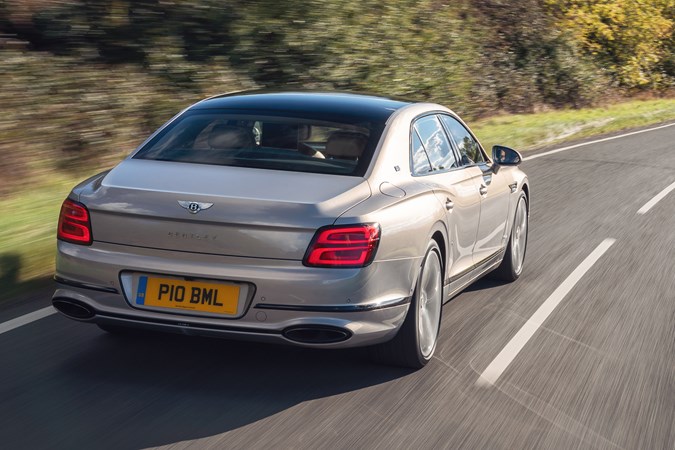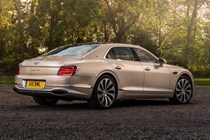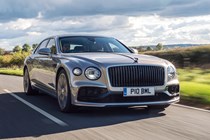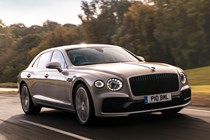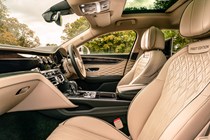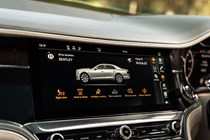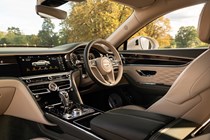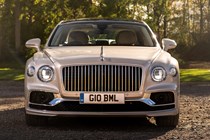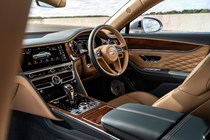Bentley Flying Spur engines, drive and performance
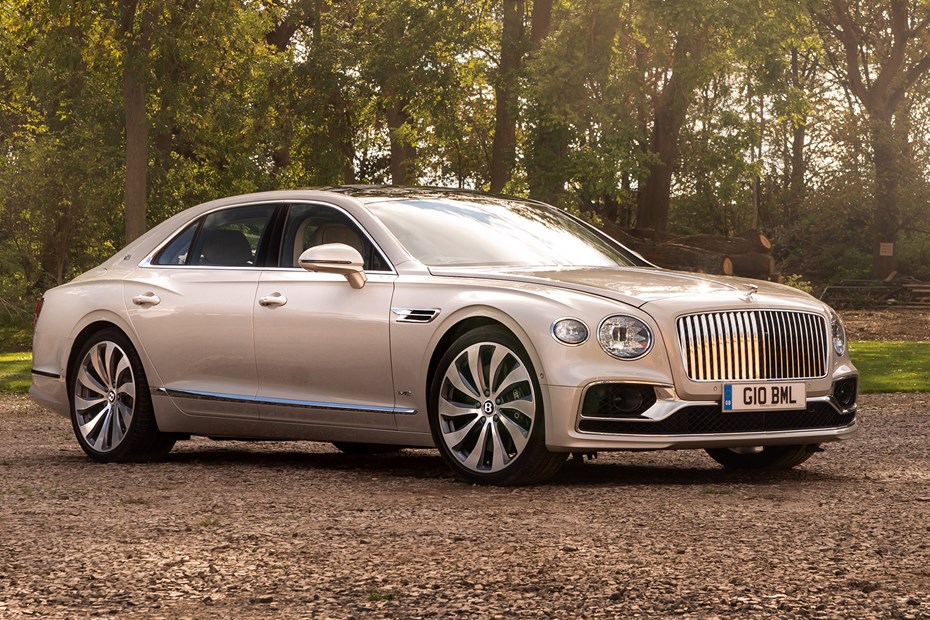
- Two engines – V8 and V12 – available
- Maximum speed ranges between 198 and 207mph
- Effortless, fast and imperious on the road
What engine options are there?
The Flying Spur comes in two flavours for now. In terms of performance, consider it a choice between Madras and Vindaloo – both delivered in suitably muscular style by Bentley’s handbuilt V8 and W12 engines.
A plug-in hybrid’s on its way – powered by the same 3.0-litre V6 petrol/electric drivetrain you’ll find in the Bentayga Hybrid. You can read about how that drives elsewhere, and we’ll report on the Flying Spur’s PHEV transformation once we get our hands on one.
Petrol engines
The ‘entry-level’ Flying Spur is powered by a 4.0-litre, twin turbocharged V8 engine shared with the Continental GT. It develops a maximum power output of 550hp and 770Nm of torque at 2,000rpm.
Performance is what Bentley used to call ‘sufficient’ in the old days. It’s not all about all-out performance, and to improve fuel economy, the V8 can shut down four of its eight cylinders under light-load conditions. This cylinder deactivation takes around 20 milliseconds. The V8 comes with Adaptive Air Suspension, Torque Vectoring and Electric Power Steering.
The W12 is an easy one to sum up: mighty. The on-paper performance figures are impressive, but they still fail to convey the sheer thrust this car generates from a standing start. It’s not quiet when you fire it up, but once the short warm-period is passed, this is a silent, broad-shouldered unit that delivers stout performance from the off.
As you’d expect, you don’t need to work it hard to turn in a towering performance – throttle response is lazy and tuned for smoothness and tractability around town, and is perfectly suited to what this car’s all about. When you do want to overtake, there’s a little pause as the turbos spool up, then it’s away and building speed improbably rapidly.
Sometimes the transmission feels a little slow to respond, especially when you’re looking to accelerate from 30 to 70mph quickly, but you can overcome this by using the transmission’s manual shifters – something keen drivers will enjoy doing on open roads. And it is worth repeating: this 2.5-tonne luxury saloon will accelerate from 0-62mph in a time that just a few years ago, would have put it among the supercar elite.
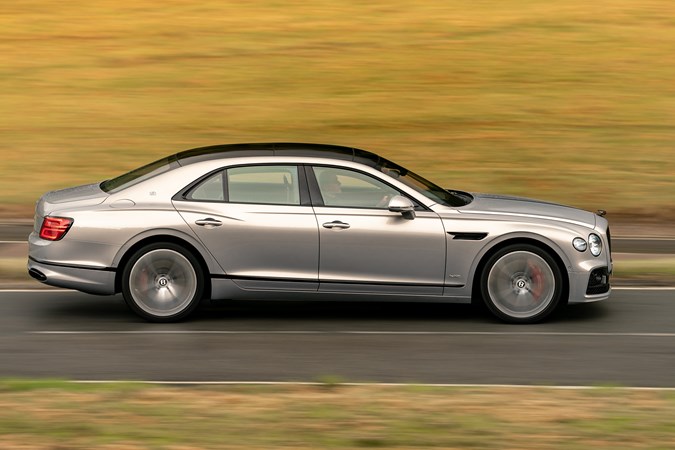
Handling
- Four-wheel drive and four-wheel steering on both models
- Surprisingly agile for a 2.5-tonne car
- Lots of grip and excellent roadholding
It goes without saying that Bentley has done a great job of making a car of this size and weight handle as well as it does. Get it onto a sinuous A-road and in Sport or Bentley mode it feels no larger than an Audi A6 or BMW 5 Series, which is quite an achievement.
Yes, it’s a luxury car, but the way the Flying Spur hunkers down at speed and can thread a series of A-road bends is deeply impressive. In short, there’s amazing precision and composure to be had here when you’re away from the motorway.
Here, Sport mode is the one to have as it results in the best body control and most balanced handling. Steering is never sharp, but it’s full of feel and responsive to your inputs, and in the time we had it, we only encountered one instance of body float on a particularly tricky set of corners with serious gradient changes.
